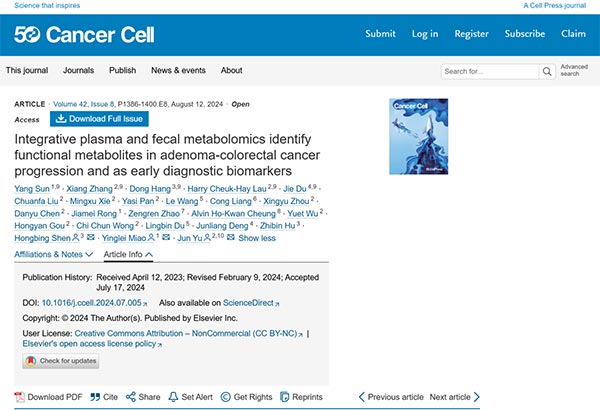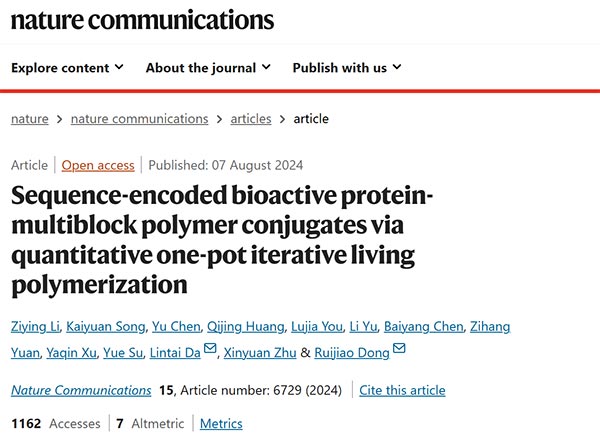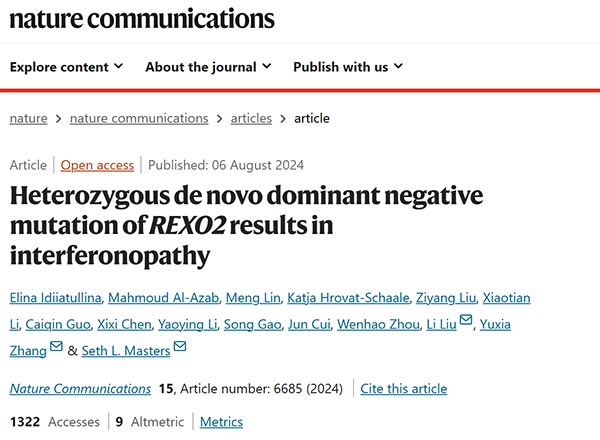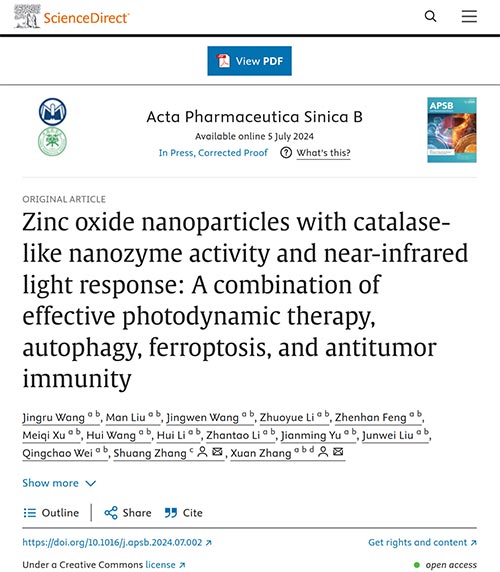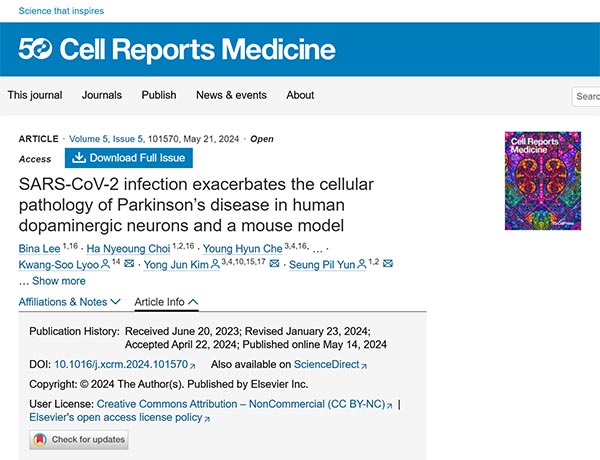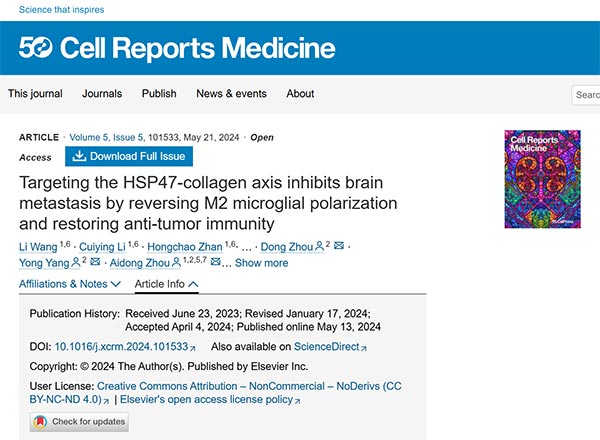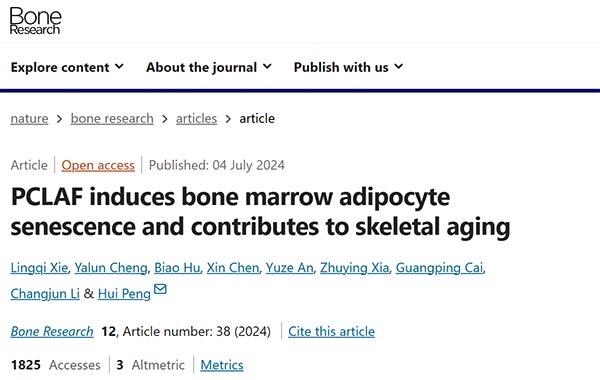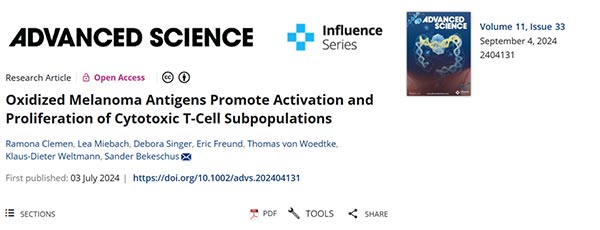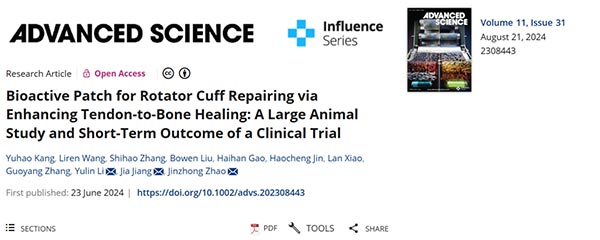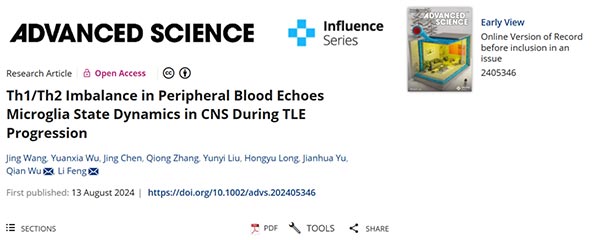Thank you for your continued support of CUSABIO! In the third quarter of 2024, articles related to CUSABIO products were published in excess of 720, with a cumulative impact factor exceeding 3500. The total number of articles has reached 23,600. Thank you for choosing CUSABIO research products during your scientific research journey. Thank you again for your trust and support. We will continue to work hard to provide you with better products and services. Now let's share our wonderful research results.
CUSABIO Quarterly Citations Review
01 Integrative plasma and fecal metabolomics identify functional metabolites in adenoma-colorectal cancer progression and as early diagnostic biomarkers
Impact Factor: 48.8
Journal Name: Cancer Cell
CUSABIO Citation Product:
Recombinant Human Alpha-enolase (ENO1); CSB-YP007670HU
Recombinant Human Fragile X mental retardation syndrome-related protein 1 (FXR1); CSB-EP009087HU(A4)
Research Highlights:
This study integrated plasma and fecal metabolomics to identify functional metabolites in the progression of colorectal cancer (CRC) and colorectal adenoma, and explored their potential as early diagnostic biomarkers. The study found that the increase of certain metabolites (such as oleic acid) in CRC is associated with disease progression, while the decrease of other metabolites (such as allocholic acid) is related to disease suppression. These metabolites can directly bind to tumor cell receptors to modulate downstream oncogenic pathways. Clinically, a panel of 17 plasma metabolites was established to accurately diagnose CRC and adenoma. The results highlight the key role of metabolites in CRC progression and demonstrate the potential of plasma metabolites as biomarkers for non-invasive early diagnosis of CRC patients.
02 Sequence-encoded bioactive protein-multiblock polymer conjugates via quantitative one-pot iterative living polymerization
Impact Factor: 14.7
Journal Name: Nature Communications
CUSABIO Citation Product:
Rat rudimental bovine serum albumin(BSA) check-up ELISA kit; CSB-E08634r
Research Highlights:
This article reports a quantitative one-pot iterative living polymerization technique for precise control over the molecular structure and monomer sequence of protein-polymer conjugates. Using this technique, the research team successfully developed a series of sequence-controlled protein-multiblock polymer conjugates, significantly enhancing their biostability, pharmacokinetics, cellular uptake, and in vivo biodistribution. All-atom molecular dynamics simulations were performed to reveal the definite sequence-function relationship of the bioconjugates, further demonstrating their sequence-encoded cellular uptake behavior and in vivo biodistribution. This work provides a robust approach for creating precision protein-polymer conjugates with defined sequences and advanced functions, promising candidates for disease treatment.
04 Zinc oxide nanoparticles with catalase-like nanozyme activity and near-infrared light response: A combination of effective photodynamic therapy, autophagy, ferroptosis, and antitumor immunity
Impact Factor: 14.7
Journal Name: Acta Pharmaceutica Sinica B
CUSABIO Citation Product:
Mouse High mobility group protein B1,HMGB-1 ELISA Kit; CSB-E08225m
Research Highlights:
This study developed zinc oxide nanoparticles (ZnO NPs) with catalase-like nanozyme activity and near-infrared light response for enhanced photodynamic therapy (PDT) efficacy. The ZnO NPs can convert 808 nm near-infrared light into 401 nm visible light to excite the photosensitizer Ce6, enabling deep-tissue PDT. Moreover, as nanozymes with peroxidase-like activity, ZnO NPs can decompose hydrogen peroxide in tumors to produce oxygen, thereby alleviating the hypoxic tumor environment. The study also found that ZnO NPs can induce ferroptosis and autophagy in tumor cells without light, thereby enhancing the antitumor immune response. These findings indicate that ZnO NPs have great potential in improving PDT effects, promoting antitumor immune responses, and serving as an effective tumor treatment strategy.
05 SARS-CoV-2 infection exacerbates the cellular pathology of Parkinson's disease in human dopaminergic neurons and a mouse model
Impact Factor: 14.3
Journal Name: Cell Reports Medicine
CUSABIO Citation Product:
N Recombinant Monoclonal Antibody, FITC conjugated; CSB-RA33255C1GMY
Research Highlights:
This article investigates whether SARS-CoV-2 infection exacerbates the cellular pathology of Parkinson's disease. The researchers used human dopaminergic neurons and hACE2 transgenic mouse models to conduct the study. The findings reveal that SARS-CoV-2 infection spreads to the brain via the nasal cavity and worsens the degeneration of dopaminergic neurons treated with 伪-synuclein preformed fibrils. Moreover, the neuroinflammatory response in SARS-CoV-2-infected mice persists for over 60 days even after the virus is undetectable in the brain. These findings highlight the potential long-term neurodegenerative effects of COVID-19 on Parkinson's disease.
06 Targeting the HSP47-collagen axis inhibits brain metastasis by reversing M2 microglial polarization and restoring anti-tumor immunity
Impact Factor: 14.3
Journal Name: Cell Reports Medicine
CUSABIO Citation Product:
Mouse Collagen Type Ⅰ, Col ⅠELISA Kit; CSB-E08083m
Research Highlights:
This article investigates the role of heat shock protein 47 (HSP47) in brain metastasis of lung and breast cancer. The study found that upregulation of HSP47 in tumor cells promotes collagen deposition, which suppresses anti-tumor immune responses through polarization of M2 microglia, thereby facilitating brain metastasis. Using the HSP47 inhibitor Col003 can restore anti-tumor immunity and enhance the efficacy of anti-PD-L1 immunotherapy for brain metastases. The research indicates that HSP47 is a critical determinant of M2 microglial polarization and immunosuppression, and targeting the HSP47-collagen axis is a promising therapeutic strategy for treating brain metastatic tumors.
07 PCLAF induces bone marrow adipocyte senescence and contributes to skeletal aging
Impact Factor: 14.3
Journal Name: Bone research
CUSABIO Citation Product:
Mouse cross linked C-telopeptide of type I collagen (CTX-Ⅰ) ELISA Kit; CSB-E12782m
Research Highlights:
This article explores the role of bone marrow adipocytes (BMAds) in skeletal aging and finds that exercise can inhibit the secretion of PCNA clamp-associated factor (PCLAF) from bone marrow macrophages to suppress BMAd senescence, thereby alleviating skeletal aging. The study also discovers that PCLAF promotes the senescence of BMAds by binding to the ADGRL2 receptor and inhibiting the AKT/mTOR signaling pathway, a process that promotes bone loss. In addition, the study develops a PCLAF-neutralizing antibody and confirms its therapeutic potential in improving skeletal health in old mice. In summary, the research reveals PCLAF as an inducer of BMAd senescence and provides a promising therapeutic strategy for treating age-related osteoporosis.
08 Oxidized Melanoma Antigens Promote Activation and Proliferation of Cytotoxic T‐Cell Subpopulations
Impact Factor: 14.3
Journal Name: Advanced science
CUSABIO Citation Product:
Recombinant Mouse Melanocyte protein PMEL (Pmel), partial; SB-MP717120MO
Research Highlights:
This article investigates how oxidative stress can promote antitumor immune responses by altering oxidative post-translational modifications (oxPTM) of melanoma-associated antigens MART and PMEL. The study found that cold plasma technology-treated oxidized MART (oxMART) and oxidized PMEL (oxPMEL) significantly enhance the activation and proliferation of cytotoxic T-cell subpopulations. The results showed that the oxMART vaccine increased the activity of cytotoxic central memory T-cells, while the oxPMEL vaccine led to increased proliferation of cytotoxic effector T-cells. Additionally, the study developed a PCLAF-neutralizing antibody, demonstrating its therapeutic potential in improving skeletal health in old mice. This research provides, for the first time, evidence of the importance of oxidative modifications of two melanoma-associated antigens in inducing anticancer immunity.
09 Bioactive Patch for Rotator Cuff Repairing via Enhancing Tendon‐to‐Bone Healing: A Large Animal Study and Short‐Term Outcome of a Clinical Trial
Impact Factor: 14.3
Journal Name: Advanced science
CUSABIO Citation Product:
Human Collagen Type Ⅵ(COLⅥ) ELISA Kit; CSB-E16375h
Research Highlights:
The article presents a bioactive patch for rotator cuff repair by enhancing tendon-to-bone healing. The research team utilized bioactive components from the umbilical cord (UC) to fabricate a novel tissue engineering scaffold that modulates the tendon-bone interface (TBI) healing microenvironment in vitro, promoting cell proliferation, migration, inflammation suppression, and chondrogenic differentiation. In vivo validation in a canine model and short-term clinical trial outcomes demonstrated the efficacy of the UC scaffold in promoting TBI reconstruction and rotator cuff repair. This study provides key insights for clinical
10 Th1/Th2 Imbalance in Peripheral Blood Echoes Microglia State Dynamics in CNS During TLE Progression
Impact Factor: 14.3
Journal Name: Advanced Science
CUSABIO Citation Product:
Human Neurofilament protein L (NF-L) ELISA kit; CSB-E16094h
Rat Neurofilament light polypeptide(NEFL) ELISA kit; CSB-EL015688RA
Research Highlights:
This study explores the relationship between the imbalance of Th1/Th2 cells in peripheral blood and the dynamics of microglia state in the central nervous system (CNS), and how this relationship affects the progression of temporal lobe epilepsy (TLE). The study found an imbalance of Th1/Th2 cell subsets in the peripheral blood of TLE patients, accompanied by the release of related cytokines. It is proposed that this peripheral imbalance may influence central inflammation by mediating microglial state dynamics within epileptic foci and distant brain regions. In a lithium-pilocarpine-induced TLE rat model, a peripheral Th1/Th2 imbalance and corresponding central and systemic responses were observed. Notably, CD4+ T cells infiltrated through the compromised blood-brain barrier (BBB) and were spatially close to microglia around epileptic foci. Depletion and reinfusion of CD4+ T cells via intravenous injection modulated microglial state dynamics and altered the secretion of neuroinflammatory cytokines. Moreover, mRNA sequencing of the human hippocampus identified Notch1 as a key regulator of Th1/Th2 differentiation, CD4+ T cell recruitment to brain infiltration sites, and the regulation of microglial responses, seizure frequency, and cognition. The study emphasizes the significance of Th1/Th2 imbalance in modulating the "systemic-central" response in TLE and highlights Notch1 as a potential therapeutic target.
23000+ Published Papers!
CUSABIO team. CUSABIO Quarterly Citations Review: Q3 2024, Over 720 Citations with an Impact Factor Exceeding 3500, Totaling 23,600 Articles!. https://www.cusabio.com/c-21192.html


